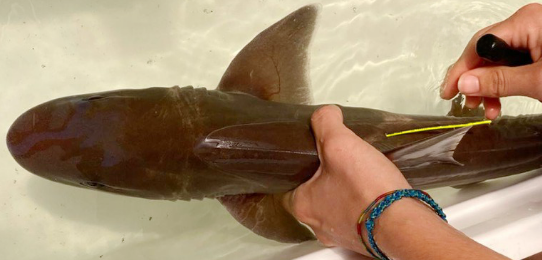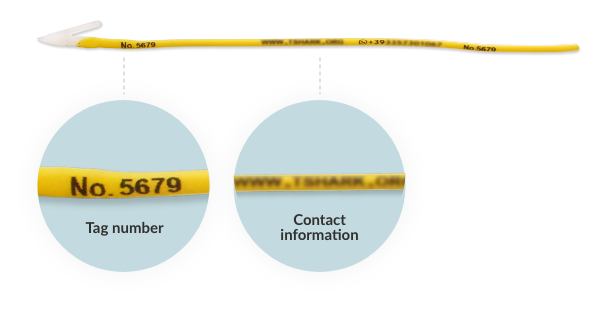Tracking Sharks for conservation
Many sharks and rays are migratory species. By tagging animals we can learn about their behavior, their distribution, their population and important migration routes and areas.
From the elusive Angelshark to the common Smoothound:
Join us to track sharks and rays across the Mediterranean and beyond!
Help us to find out where sharks and rays go!
It is easy!
About the
platform
Animal
map

About the platform
Why
we do it.
Sharks, are able to perform local movements to extensive migrations and come back to their natal sites, showing aggregative and social behaviours, using different habitats during their life cycle.
Their behavioural and life history traits make many of them particularly vulnerable to Fishery and habitat degradation. They can be target or by-catch of different fishing activities. As a consequence, a marked decline of several shark, species has been documented by scientific studies and the knowledge of local communities, including fishers. But these species play important roles in marine ecosystems; therefore, their decrease may cause
consequences affecting entire ecosystems and the resilience of our seas in the light of climate change.
More than 80 species of sharks, skates and rays and chimearas are present in the Mediterranean and more than half of these species are threatened. Nonetheless, the information on many aspects of the life of these species is still scarce and incomplete. This hinders sustainable fisheries management, conservation of their habitats and more.
Tracking Sharks For Conservation aims to fill this knowledge gap:
an action putting together scientists, NGOs, fisheries management authorities and local communities, including fishers from different Mediterranean countries.
You have caught
a marked animal?

Have you caught a tagged animal like in the picture?
- Click on REPORT
- Enter the information (in red are the most important data, the more the better!)
- Upload some pictures of the captured animal
- Done, thank you!
In case of any doubts, or you are not able to connect to the website –
Find the telephone number on the tag… works with WhatsApp too.
Contact us and we will help in real-time!
Important: All data you provide is not public and will be displayed only
for the scientists working on the project
How
we do it.
In the framework of different projects developed by research institutes, fisheries management organisations and NGOs working in the Mediterranean Sea, scientists are tagging sharks, using a variety of methodologies.
The recording of tagged animals’ recapture is ESSENTIAL to reconstruct species movements, improving our knowledge of their biology. Professional and recreational fishers are the key players for collecting these data.
The tag
and how it works.

Tags are constituted by a piece of tough plastic that is attached to the fish with different anchoring devices, according to the type of fish. They have been used for decades and are not harmful to the fish.
They are usually placed under the dorsal fin of the sharks or on different body parts in skates and rays.
On the tag, an ID code is reported in order to unambiguously identify the fish. At tagging, each animal is identified, its characteristics, such as sex and size, registered, and then associated with a unique ID code. On the tag a phone number for contact and/or a website is reported to communicate the recapture.
Why report a tagged animal?
Why do we need the help of fishermen?
Because with a simple and fast reporting of a captured animal, tagged by scientists and recaptured by fishers, we can get new valuable information.
Did you know that starting from the number of fish caught in a certain period of time it is possible to trace back to an estimate of the number of individuals in the sea?
Did you know that having available GPS position of the points of the release and of the recapture of a tagged animal you can keep track of the movements of these animals?
Did you know that by looking at the distribution of tagged and recaptured individuals you can get a clearer picture of the population distribution of different species in the Mediterranean Sea? In this way it is possible to provide useful indications for a focused management of resources.

